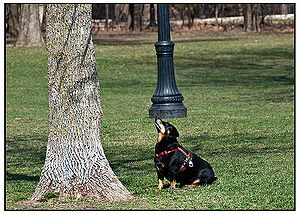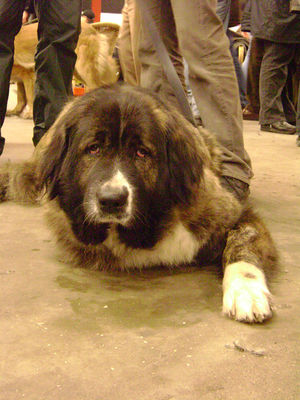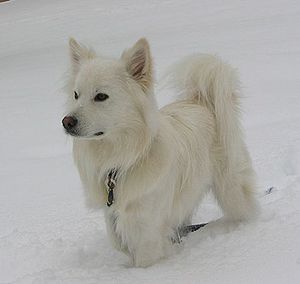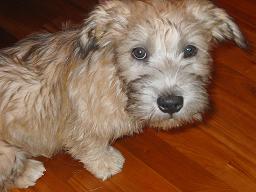 |
| Vital Statistics: |
| Place of Origin: England |
| Group: Herding dog |
| Height: 10-12 in. |
| Weight: 6-13 lbs |
| Life span: 15 yrs. or more |
| Trainability: high |
| Good with children: only older children |
| Good with other pets: with other dogs if socialized early |
What is the origin of the Lancashire Heeler?
Details of the origin of the Lancashire Heeler are cloudy. In its native England in the County of Lancashire, it has been known for about 150 years. The name “heeler” applies to a group of herding dogs that nip at the heels of their charges without injury, to get them moving. This Heeler is named as a “vulnerable native breed” since less than 300 have been registered at The Kennel Club.
What does the Lancashire Heeler look like?
The Lancashire Heeler if about 10-12 inches tall. Weight is 6-13 lbs. Its legs are very short. Ears are erect. The coat is smooth with an undercoat that keeps the dotg dry in all weather. In winter, there is a mane visible around the neck. Coat colors are black and tan or liver and tan.
What is the temperament of the Lancashire Heeler?
The Lancashire Heeler is a courageous dog. Training should be conducted with a kind but firm hand. They are very intelligent and can be stubborn, so patience is required. They should have early socialization with other dogs. These heelers are affectionate with their owners, but are not suitable for families with young children. They do better with older children. Your yard should be dog-proofed to avoid their escape. A dog park is a great place to exercise them where they can run free to release energy. They do well living in apartments if they have enough exercise.
What is the Lancashire Heeler used for?
The Lancashire was mainly a farm dog, herding and guarding cattle and sheep. They have also hunted rats and rabbits. They can be trained to compete in agility and obedience trials. Most have good temperaments and can make excellent therapy dogs.
Possible Health Issues
Eye diseases, patellar luxation.
- Australian Cattle Dog
- Australian Kelpie
- Australian Shepherd
- Bearded Collie
- Beauceron
- Belgian Sheepdog – Groenendael
- Belgian Tervuren
- Bergamasco
- Berger Picard
- Blue Lacy
- Border Collie
- Bouvier des Flandres
- Briard
- Cardigan Welsh Corgi
- Catahoula Leopard Dog
- Collie
- English Shepherd
- Entlebucher
- Finnish Lapphund
- German Shepherd
- Hovawart
- Icelandic Sheepdog
- Laika
- Miniature American Shepherd
- Mudi
- Old English Sheepdog
- Pembroke Welsh Corgi
- Polish Lowland Sheepdog
- Puli
- Pumi
- Pyrenean Shepherd
- Shetland Sheepdog
- Standard Schnauzer
- Swedish Vallhund
- Airedale Terrier
- Beagle
- Bedlington Terrier
- Bluetick Coonhound
- Border Collie
- Border Terrier
- Bull Terrier
- Bulldog
- Bullmastiff
- Ca de Bou
- Cavalier King Charles Spaniel
- Clumber Spaniel
- Collie
- Curly-coated Retriever
- Dandie Dinmont Terrier
- English Cocker Spaniel
- English Foxhound
- English Setter
- English Springer Spaniel
- English Toy Terrier
- Flat-coated Retriever
- Golden Retriever
- Greyhound
- Harrier
- Jack Russell Terrier
- Lakeland Terrier
- Llewellyn Setter
- Manchester Terrier
- Mastiff
- Norfolk Terrier and Norwich Terrier
- Old English Sheepdog
- Old English Terrier
- Otterhound
- Parson Russell Terrier
- Shetland Sheepdog
- Smooth and Wire-haired Fox Terrier
- Sussex Spaniel
- Welsh Terrier
- Whippet
- Wire Fox Terrier
- Yorkshire Terrier



